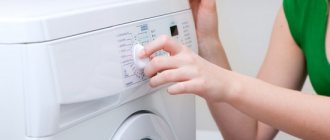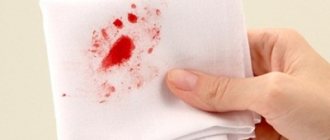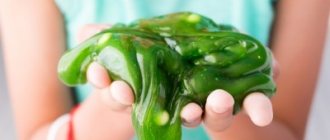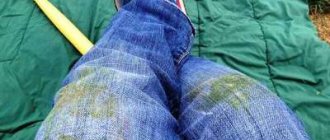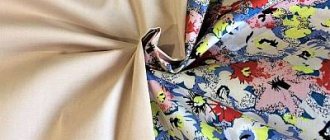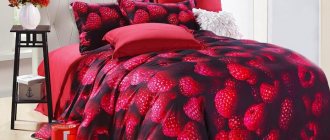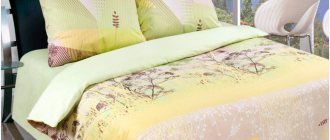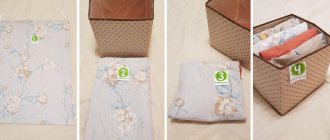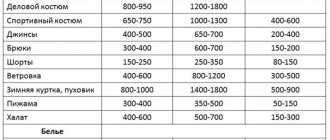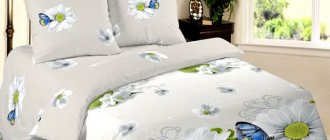Store-bought bleaches: which one to buy
To make the right choice, you need to study the range offered by manufacturers and the mechanism of action of various products.
- Chlorine. As a result of a chemical reaction of the active component (sodium hydrochloride), active oxygen is released, which is a bleaching agent.
- Optic. Contains luminescent dyes that create an optical illusion: the laundry looks snow-white, but in fact it is not.
- Oxygen. As a result of a chemical reaction of the active component (hydrogen peroxide, potassium peroxosulfate, sodium or potassium peroxocarbonate), active oxygen is released, which, being a powerful oxidizing agent, eliminates contaminants.
The pros and cons of different types of bleaches are described in the table below.
Table - Advantages and disadvantages of professional bleaches
| Bleach type | Behind | Against |
| Chloric (White, Ace) | - Affordable price; — high-quality disinfection; - whitens even in cold water | — Damages the fabric, reduces strength; — not suitable for automatic washing; — caustic fumes can cause irritation and poisoning; — used only when washing items made of cotton and linen, not suitable for delicate fabrics and synthetics |
| Optical (“OV-1”) | — Possibility of achieving the effect of dazzling whiteness | - Works only on clean things; — does not remove stains and stains; - does not rinse out of fabric |
| Oxygen (“ecO2”, “Selena”, “Persol”, Extra, Shabondama) | — Delicate removal of contaminants; — possibility of use at low water temperatures; — helps to whiten laundry at home effectively; - completely rinses out of the fabric; — provides good disinfection; - can be mixed with powder when machine washed | - High price |
How to use
When buying bleach, it is better to give preference to products without chlorine. When using oxygen fabric bleach or optical bleach, it is recommended to strictly follow the instructions on the package, since the dosage and method of application for hand and machine washing may differ.
Often housewives “the old fashioned way” use the most affordable chlorine bleach - whiteness, considering this product to be effective and the best. However, you need to remember that frequent use of bleach can have a bad effect on the condition of the fabric and you should only use it when hand washing cotton and linen items. To bleach things white, be sure to wear rubber gloves and follow these four steps.
- Stir 100-200 g of grated brown soap (72%) into 10 liters of warm water.
- Add white to the composition (a tablespoon per 3 liters of solution).
- Leave the laundry in the prepared product for 15-20 minutes.
- Rinse thoroughly in clean water.
How to restore freshness to yellowed laundry
As mentioned earlier, the loss of whiteness of bed linen is a consequence of poorly selected powder and the use of low-quality water. There are several ways to effectively whiten bed linens.
Articles on the topic (click to view)
- Fences for parking lots and parking areas
- Selection of reinforced concrete columns
- Linen bed linen: pros and cons, selection rules
- 5 ways to make your interior more expensive
- Cleaning upholstered furniture
- How to choose bed linen?
- Side for baby's crib
Bleaching with household chemicals
The easiest option is to purchase bed linen bleach, which may be chlorine-based. There are also oxygen and optical brighteners. Methods of use are always described on the packaging of bleaching products.
Chlorine-containing
Chlorine-containing products are good at removing the yellow color from laundry, but at the same time they are very harmful to fabrics. After using such bleaches, bed linen loosens, as chlorine destroys the structure of the fibers. In addition, chlorine-based bleaches are used only for hand washing, so you need to protect your hands and respiratory tract from the toxic fumes of this substance.
Important! Do not use chlorine bleach if there are patterns on the fabric, otherwise the product will ruin their color.
Oxygen
Oxygen bleaches are delicate, so they are suitable even for all types of fabrics. In addition to their main effect - whitening, they additionally add brightness to colored laundry. The cost of oxygen bleaches is high, but it is justified by the fact that the products will last you longer due to their gentle effect on fabric fibers.
Aqueous solution of bleach
Whiteness is an aqueous solution with a large amount of sodium hypochlorite concentrate. The mixture of chemical substance in solution can be up to 85% of the total volume. Whiteness is one of the most common means for bleaching laundry at home or in production. This product also has disinfecting properties.
Important! Whiteness loosens fabric fibers with regular use.
“Grandmother’s” advice: boiling...
Despite the abundance of special products on store shelves, “grandmother’s” methods of whitening clothes do not lose their relevance. Folk remedies are a real salvation for housewives who care not only about the cleanliness of the house, but also about the safety of the family budget. The most popular option is boiling. But it is permissible to resort to this method only when bleaching cotton and linen products: these fabrics are not afraid of high temperatures.
Before boiling, it is necessary to prepare a basic cleaning solution. The recipe is as follows: dissolve 0.5-1 cups of washing powder or 100-30 g of 72% brown soap pre-ground on a coarse grater in 10 liters of warm water. Boiling in a solution of laundry soap is more environmentally friendly. This method is recommended for children's sleeping sets.
Classic version
- Cover the bottom of a large galvanized or enameled container with a piece of white cloth or a towel.
- “Load” bed linen into the container, having first thoroughly soaped any existing stains.
- Pour in the previously prepared cleaning solution.
- Bring the mixture to a boil and let the laundry simmer over low heat for half an hour to an hour.
- Stir the products from time to time with a wooden stick or special tongs.
You should not use dishes made of copper and iron for boiling: such materials can oxidize and stain the material when heated.
"Advanced" option
To make boiling bleaching more effective, additional components can be added to the detergent composition.
- Ammonia. A tablespoon of the product is immediately mixed into the cleaning solution.
- Bleaching powder. Pour an equal amount of water into a teaspoon of lime and mix. Dissolve the resulting slurry in a liter of water and let the mixture settle: it should become completely transparent. Add the finished product to the bed linen boiling in the washing solution and, stirring constantly, let it simmer for half an hour. When used frequently, bleach significantly degrades the quality of the material.
- Soda ash or baking soda. Soak the laundry in a boiling soap solution for half an hour with the addition of three to four tablespoons of soda.
- Soda, turpentine, brown soap. Boil things for half an hour in a special composition: stir 50 g of soda, 70 g of turpentine and 100 g of crushed brown soap in 10 liters of water.
When using bleach, turpentine and ammonia, it is better to leave the kitchen, returning periodically to stir the laundry, as harmful fumes are released during the heating process.
Bleaching bed linen at home
Available items from a medicine cabinet or kitchen cabinet are useful in many areas of housekeeping. You can’t do without them when whitening your bed. Various products and medicines will come to the rescue.
Soda
Its use does not require much effort or time. The product is suitable for automatic washing; the machine protects against the effects of soda better and lasts longer.
- Review of thermal underwear washing products
- Types of special bleaches for underwear
- What products to use when washing bed linen
Instructions:
- Combine 5 tbsp baking soda in a bowl. and ammonia 2.5 tbsp.
- Add the mixture to 5 liters of water.
- Place the laundry and leave for a couple of hours.
- Wash the soaking area in a machine on the correct setting.
Soda bleach is allowed to be added to the pan while boiling.
Hydrogen peroxide
A simple but powerful solution that is not afraid of yellowness and grayness. Hydrogen has a delicate effect on the product and refreshes it.
Instructions:
- Combine peroxide and ammonia in a 2:1 ratio.
- Dilute the mixture with 5 liters of warm water.
- Place the bedding set in the bleach liquid for 40 minutes.
- Rinse thoroughly in cool water.
This method helps to whiten even heavily discolored laundry.
Ammonia
This pharmaceutical drug has a number of useful properties. It improves the appearance of things and its quality.
Instructions:
- Prepare 10 liters of cold water.
- Add 120 ml. active component.
- Soak the laundry and leave for 35 minutes.
- Rinse, squeeze lightly, dry in fresh air.
Alcohol neutralizes the main culprit of yellowness - magnesium salt in water.
Laundry soap
A practical, cheap, but most effective method to remove any dirt and difficult stains.
Instructions:
- Using a grater, grind the soap in an amount of 200 g.
- Fill a bucket with 5 liters of water and add shavings, 1 tsp soda ash.
- Place the bucket on the stove and turn it on.
- The liquid should be brought to a boil, place the bed in it, and leave for 30-40 minutes over low heat.
Mustard
Dry seasoning can whiten, disinfect and remove greasy marks. Suitable for processing silk and delicate fabrics.
Instructions:
- Boil the water.
- Add mustard in the amount of 3 tbsp. for every 3 liters of water.
- Leave the solution to infuse for 2 hours.
- Drain the water, avoiding any powder.
- Soak the laundry in the drained liquid for 20 minutes.
- Wash as usual.
Ideal for cleaning kitchen towels.
Potassium permangantsovka
The substance is rarely used in practice; few housewives know about its whitening properties.
Instructions:
- Rub 100 g laundry soap.
- Thoroughly dilute the shavings in 10 liters of boiling water.
- Add potassium permanganate granules until a faint pink tint appears. After reacting with soap, the solution will turn brown.
- Place the bed in the prepared product for 6 hours and close the lid.
In this recipe, soap can be replaced with powder - 1 cup.
Oil
If a fatty product is mixed with other ingredients, it will give freshness to things.
Instructions:
- Bring a bucket of water to a boil.
- Pour in 2 tbsp. vegetable oil.
- Add 1 cup of powder and 1 tbsp. soda, salt.
- Fill the kit with the prepared solution and leave to act for 24 hours.
For severe stains, it is recommended to add a store-bought stain remover.
Turpentine
The solution removes yellowness and old stains from flannel fabrics.
Instructions:
- Prepare 5 liters of warm water.
- 150 g of soda is poured into it.
- Ammonia (alcohol solution) 30 ml is added.
- Stir everything thoroughly, place the liquid in the item.
- Soaking lasts 3-4 hours.
- Wash as usual, dry in the sun.
Eggshell
A simple and easy way to return whiteness.
Instructions:
- Grind dried egg shells into powder.
- Place in a cloth bag.
- Place in the drum while washing items.
Suitable for manual cleaning.
Home methods are safe and inexpensive, but require time and effort.
... soaking
It is not always possible to resort to boiling bedding. The following may interfere with the implementation of this method:
- Lack of time;
- delicacy of fabric;
- lack of kitchen space or necessary equipment.
Therefore, for a modern housewife, the question of bleaching without boiling is relevant. In this case, long-term soaking in special compounds is suitable.
Soda
- In 10 liters of warm water, stir ten tablespoons of soda (baking or soda ash) and five tablespoons of ammonia solution.
- Load the kit into the composition.
- After three to four hours, wash the items (in a washing machine or by hand) and rinse vigorously.
Soda is considered one of the safest bleaches for fabrics. However, this product is difficult to deal with heavy stains. This method will help remove yellowness from bed linen, but in particularly advanced cases you will have to repeat the manipulation several times.
Solevoe
- Dissolve five to seven tablespoons of table salt in 10 liters of warm water.
- Leave the bed linen in the composition overnight.
- Wash items in the usual way.
Combined
- Mix two tablespoons of ammonia and washing powder in 10 liters of warm water.
- Add three tablespoons of peroxide (3%) and eight tablespoons of soda.
- Soak the laundry in the mixture for four to five hours.
- Wash items in the usual way, rinse.
Mustard
- Pour boiling water over mustard powder at the rate of one tablespoon per liter of liquid.
- After two hours, drain the water and use it to soak bed linen.
- Keep things in the composition for at least three to four hours.
- Wash items in the usual way.
This homemade bleach recipe is suitable for delicates and synthetic fabrics.
Video on the topic
Oily
- In 10 liters of hot, just boiling water, dilute two tablespoons of bleach and vegetable oil. (Regular sunflower oil will do).
- Add five tablespoons of washing powder.
- Immerse the laundry in the composition.
- Cover the container with a lid or plastic wrap.
- After ten hours, rinse the laundry in running water.
- Throw it into the machine.
In turpentine
- To make this fabric bleach at home, combine two tablespoons each of ammonia and turpentine.
- Pour the mixture of pharmaceutical drugs into 5 liters of water.
- Immerse machine-washed bedding in the solution for several hours.
- Rinse vigorously.
Manganese
- Boil 10 liters of water and immediately stir 100 g of laundry soap (72%) or a glass of washing powder into the liquid.
- In a separate small jar, dilute several crystals of potassium permanganate: the solution should turn out slightly pinkish.
- Pour potassium permanganate into the detergent composition.
- Immerse the laundry in the solution and cover the container with a lid or polyethylene.
- To enhance the effect, things can be pre-moistened and rubbed with laundry soap.
- After six or more hours, rinse the items and try to further wash the bed linen from grayness in the machine.
The use of potassium permanganate for bleaching laundry is best considered as a last resort. Firstly, today the drug is not available in pharmacies without a prescription, so if you don’t have a supply at home, getting it is problematic. Secondly, it is not always possible to dissolve crystals well; if an undissolved “point” comes into contact with a white sheet, it will be quite problematic to remove it.
How to whiten bed linen: remove yellowness, grayness and black spots
Wash
White bed linen is a classic that many housewives cannot resist. To make it boil, you don't have to use dry cleaning. There are many ways to whiten bed linen at home. Moreover, not only ready-made, but also the simplest means will help.
- How to whiten white laundry at home
- Special chemicals
- Traditional methods
- Boiling
- How to bleach varying degrees of soiling
- Gray underwear that was white
- Yellowness
- Black spots
- Bleaching Safety
How to bleach white bed linen if you don't have time
The fast pace of modern life forces housewives to look for express methods of whitening bed linen. Such methods exist, but it is important to understand that they will not cope with severe contamination. The most basic option: add a couple of tablespoons of baking soda into the washing machine along with the powder. What else should I do? Try the method of whitening laundry with hydrogen peroxide. You should act in five stages.
- Load the kit into the machine.
- Combine a tablespoon of ammonia and two tablespoons of peroxide in 5 liters of water.
- Heat the solution over low heat to 70°C, but do not allow it to boil.
- Soak washed laundry in the prepared mixture.
- After 30-40 minutes, rinse the items thoroughly in clean water.
When using hydrogen peroxide, it is important to ensure that the laundry is completely immersed in the solution: yellow stains will appear on the uncovered areas after drying.
Boiling
The old reliable method of bleaching by boiling can always be used if you need to wash linen or cotton white bed linen. This option is best suited for housewives who are not sufficiently aware of the available whitening methods without the use of aggressive household chemicals.
For this, galvanized or enameled containers are used. It is better not to use copper or iron pots and basins to boil laundry, as this may provoke an oxidative reaction. Before immersing bedding in a container, the bottom must be covered with some piece of clean white cloth.
Detergents must be dissolved in water; in addition, stains will have to be treated with soap foam. The instructions for washing powders indicate the amount of detergent added for bleaching using the boiling method. It is not recommended to use powders when washing silk or woolen items. White bed linen should be straightened into the container so that it is completely filled with water.
If bed linen has turned yellow over time, you can bleach it by boiling it with lime. 1 teaspoon of this product is dissolved in 1 liter of water. It is highly undesirable to use metal containers for this. White fabrics cannot be bleached due to the oxidation process of the metal. The resulting solution is added to the pan or tank where the laundry is to be boiled.
The process should last a maximum of half an hour; the contents of the container should be stirred periodically. After bleaching, bedding should be rinsed well several times. This method can be effective even on stained white fabric. It is advisable to use lime for bleaching as little as possible because the structure of the material gradually begins to collapse under aggressive chemical influence.
You can bleach white bedding using potassium permanganate
"Snow" rinses
A lifesaver that returns whiteness to laundry will be homemade rinse aids.
- With boric acid. Dilute boric acid in warm water (one or two tablespoons per 3 liters of liquid). Rinse the washed clothes in the composition for several minutes. After this, rinse thoroughly in clean water.
- With starch or baking powder. Stir two to four tablespoons of potato starch or baking powder into 10 liters of clean warm water. In the composition, rinse the laundry after washing. No additional rinsing in clean water is required.
After some bleaching methods, products acquire an unpleasant odor. To make the fabric smell fragrant, you can rinse the laundry in clean water, after dissolving a small amount of commercial fabric softener or two or three drops of your favorite essential oil.
